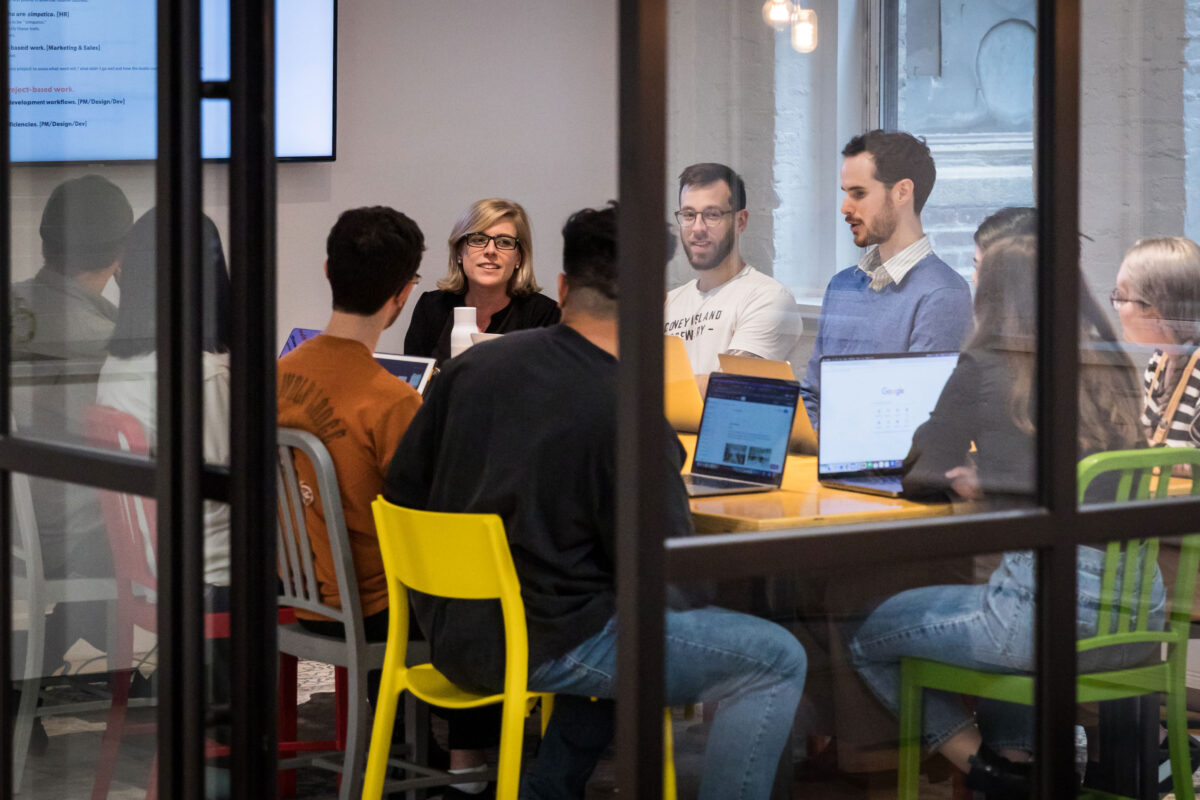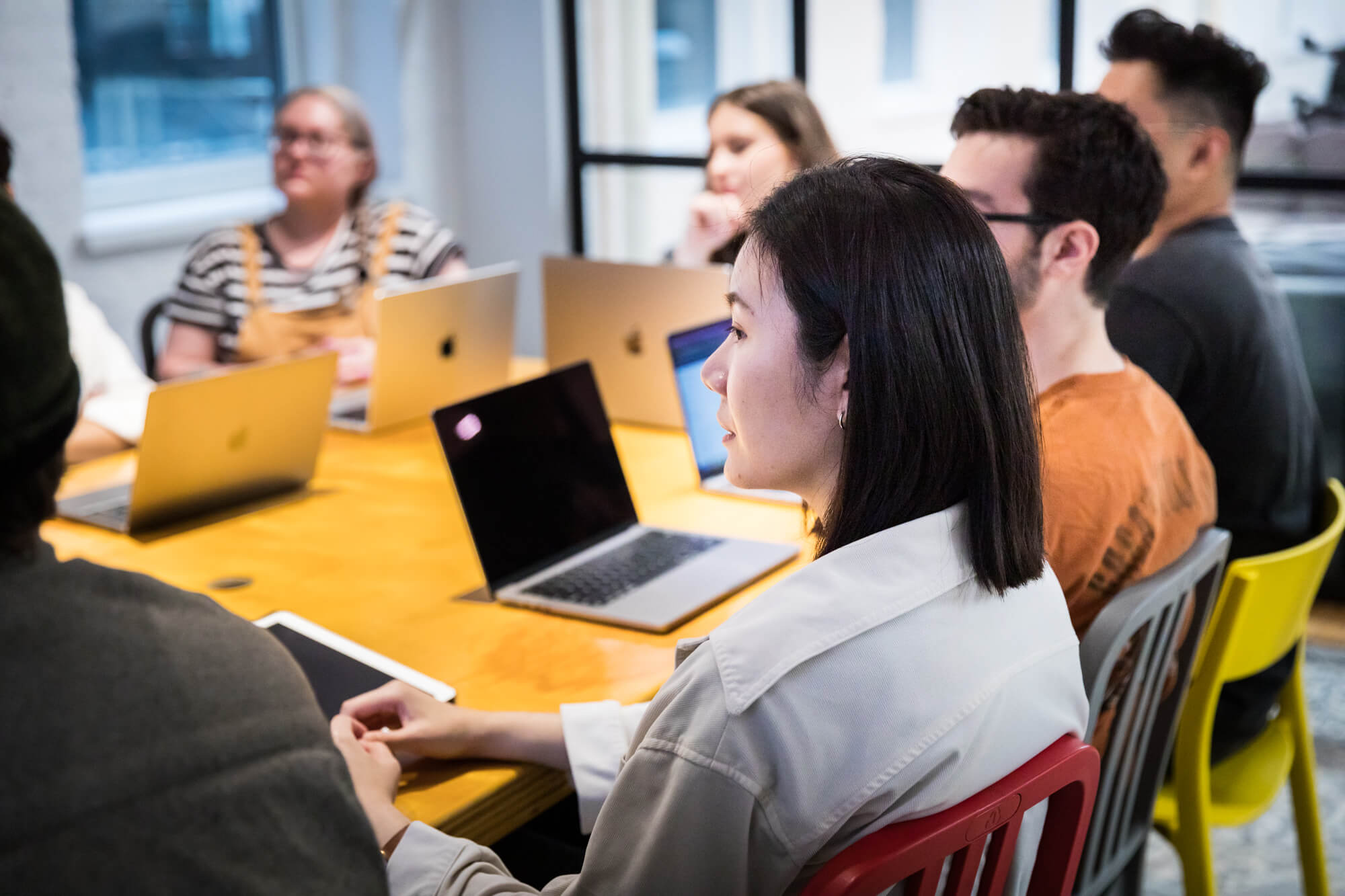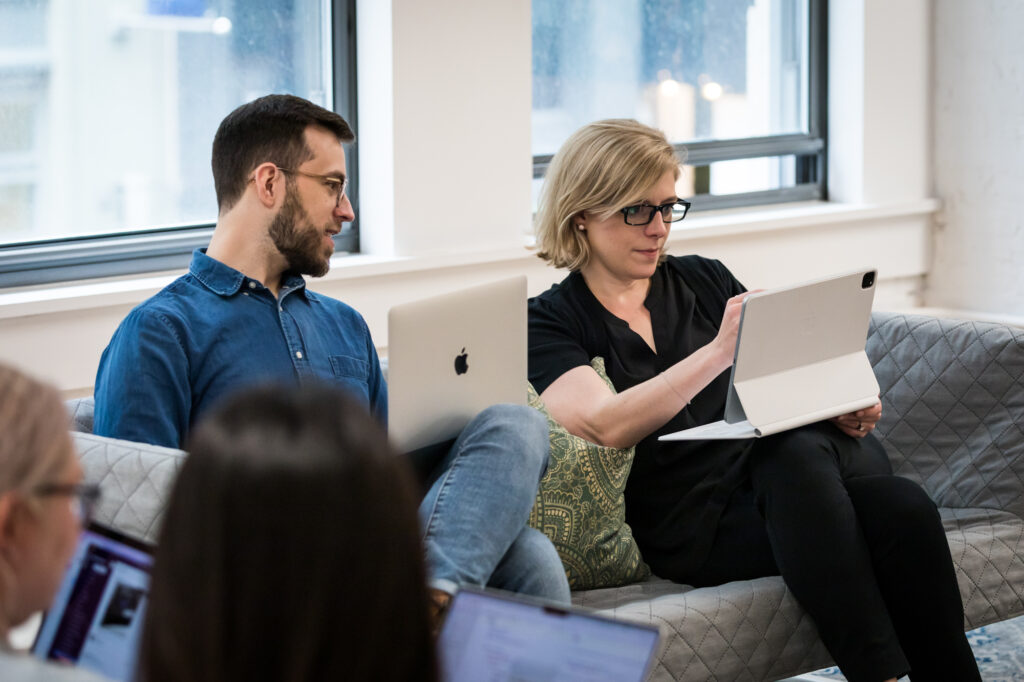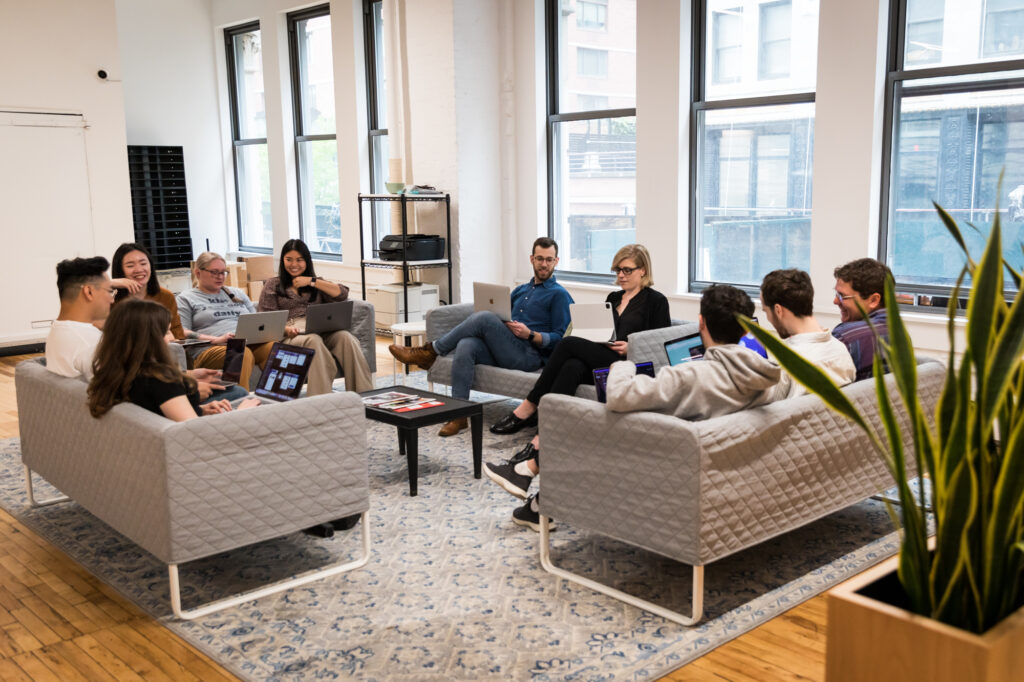Hello, hello!
You’re (likely) here because we’re about to embark on the exciting journey of inventing and building a new visual language and/or new digital front door (a/k/a website) for your organization, business, or product. We can’t wait.
Before we dive into the work itself (wireframes, content strategy, design, development, and more), our first order of business is to learn all about you and what you’re looking to accomplish, in order to ensure our final deliverables fulfill their goals.
This initial phase of every project is called “Discovery,” and it always begins with a kickoff.
What should I send to Simpatico prior to the kickoff?
We’ll do our due diligence combing the internet for information about your organization, but we’d love for you to send us homework to help us get up to speed about your organization, messaging, goals, and website plans. This may include:
- One Pagers (final or rough copy)
- Mission or Vision Statements
- Decks
- Investor Materials
- Rough Site Map
- Current Style Guide or Brand Book
- Visual Inspiration (see below)
Who should attend the kickoff on the client side?
All relevant stakeholders with a unique perspective on your organization, e.g.:
- People who are responsible for the organization’s vision (CEO, COO, etc.)
- People who interface directly with customers and can represent their point of view (Head of Customer Success)
- People who dictate the marketing KPIs (CMO, Head of Marketing)
- People who own the organization’s brand (Head of Design)
Are there things we should discuss before meeting with you?
The Client Side Project Management Lead
We find project management goes smoothly if we identify one person on your team as our chief point of contact. We like to call them “the chorus” (think Greek theater): the person who consolidates all feedback, coordinates meetings with us, and represents the voice of the group.
Company Story, History, Narrative, and Messaging
What is your company story? What problems do you solve? How do you solve them? Note that we will want to hear about not just the what, but the why and the how: What are your core goals, values, and personality? What is the vision and future of the organization? Do you see your narrative changing within the next five years? And finally, what you aren’t is just as important (if not more important) than what you are. Are there subjects or reactions that you want your brand narrative to avoid completely? If you have (or want to create) a “core messaging” document that outlines your mission and unique value propositions (the value people get from your product/service), that can be invaluable in helping us understand your overall story, messaging, and benefits.
Target Customers, Users, or Audience
As a business or organization, you have people for whom you do what you do. Who are they? What do they care about, and what value do you (or your products) provide to them? How do you want them to feel when they use your product or services, and what do you want them to do on the website? The more specific the answers to these questions, the better. Note that you may have multiple customers (especially if you have different service or product offerings); customer or buyer personas are a tactic that can be very helpful in describing the different types of customers you have and what they care about.
Marrying the Messaging and the Users
Note that you may want to create unique, tailored messaging for different personas; as humans, we naturally want to change our story a little bit depending on who we’re talking to (and consequently, what we know they care the most about). For example, if someone is interested in hiring Simpatico for a WordPress development project, I’d focus on our front-end and WordPress development capabilities rather than our UX/product design skills.
Competition
We’ll definitely want to dive into reviewing your competition, what they do well/poorly, and how you’re different from them. Note that we define “competition” as an alternate way of addressing the customer’s problem that you solve. For example, competition for productivity software may be a pen and pencil. In other words, we want to know how customers would solve their need without you, and then why they would choose you over any competition that exists.
Project Goals
This varies depending on the type of engagement, but we will want to know what constitutes success for the engagement, noting those KPIs (key performance indicators) can be qualitative or quantitative — or both. Perhaps if we’re doing a website redesign, you want the site to feature an improved aesthetic, but you also want to drive more people to sign up for newsletters and contact you.
Brand, Visual Identity, and Tone
Even if a visual identity overhaul isn’t in our scope of work, we’ll want to discuss the visual identity that you currently have so we can represent it correctly in our new deliverables:
- How should someone feel when they interact with anything related to your business?
- What tone of voice does your company use? Are you formal? Casual?
- How did you arrive at your current brand and identity? What is the meaning behind your name? Logo? Color choices? Typography? How did it happen?
- Does the brand use illustration? Custom photography? What is the style and tone of these?
Note that we’re also delighted if you want to bring along some visual examples of where you’d like to take things directionally, along with an explanation of why you feel the visual choices feel right for your organization. We love receiving references and inspiration of what you like, even if it’s not from your vertical or space.
Content (Copy and Features)
When we work with clients on their websites, there’s often a “chicken and egg” question that arises: Should the design be based on content, or should the content be based on design? After trying it both ways, we’ve settled on an answer of “both!”
We find it works best if you think about and bring a recap of your general story to the kickoff. If you’re a tech company, for example, should the primary focus be on the human story or the product story?
Additional questions to think about in terms of content and functionality:
- What ‘evergreen’ stories do you want to tell? (The story of your history? Products’ features?)
- What content do you plan on creating on an ongoing basis, post-launch? (Webinars? Blog posts? Downloadable white papers?)
- Will you be working to optimize any particular content for search (or working with an SEO agency)?
- What do users need to be able to do on the site?
- Will we need to integrate the site with a CRM or marketing automation software?
- Will we need to integrate a job board?
- Is there any other functionality or integrations we should be aware of?
And if you already have a website:
- What’s working/not working from a story and content perspective?
- What content (pages and/or specific articles) do you want to keep or not keep?
- Are there Google Analytics and/or Search Console accounts you can share with us ahead of time so we can look at traffic patterns?

Content (Photography, Video, or Other Assets)
Generally, when working through a brand’s visual identity or even the website strategy, we start with the brand story, which leads to the evolution of a holistic creative direction. From there, the art direction pieces begin to emerge: how the brand (more tactically) tells its story: the appropriate tone of voice, whether the use of illustration or photography makes sense, guidelines around the style of illustration or photography, etc.
However, before Discovery begins, it is of course difficult for our team to estimate all the different pieces that will need to happen, and how they should be executed. (The choice of illustrator, for example, largely depends on the type of illustration we decide makes the most sense for the brand.) Consequently, we generally find the following approach to be the most effective:
After the Discovery and Strategy phases are complete (including general creative direction), if our team and yours agree that photography, video, or animations make sense, we hold a group meeting with the photographer or videographer to discuss the role that the assets will play in the website’s narrative. This discussion may include our team sharing mood boards, general creative direction guidance, a shot list, or other deliverables so that the delivered assets match the direction, content, and goals of the website or creative collateral. We’ll then work in close collaboration with your chosen vendors to coordinate their deliverables into our overall project plans/timeline.
What is the agenda of the kickoff?
We typically cover the following, incorporating the questions outlined above:
- Introductions
- Overall engagement timeline and key milestones
- Overview of project management processes
- Your organization (mission, audience, goals)
- Your marketing strategy
- Your organization’s visual identity
- Your website content (high level)
But … what if our startup is still figuring these things out?
We work with a lot of startups here at Simpatico, many of whom are in the process of evolving quickly, iterating on their business plans, working in an extremely agile manner, and pivoting frequently based on real world learnings.
It is true that the entirety of a visual identity engagement (which typically around takes 3-5 weeks) is based off of what we hear during the kickoff meeting. A tailor sews a dress based on measurements taken at one moment in time, but if a bride-to-be loses weight, new measurements will need to be taken. Similarly, if our client’s business or goals changes fundamentally during the course of our engagement, we’ll need to go back to the beginning of the process.
That said, we do believe and understand that businesses and their marketing collateral are dynamic and never ‘done,’ so we love being brought back into the fray to make updates.
So without further ado …
We’re looking forward to working together and learning more about you. If you have any questions, don’t hesitate to reach out.
See you soon!
Tamara
 hi, i'm
hi, i'm 



